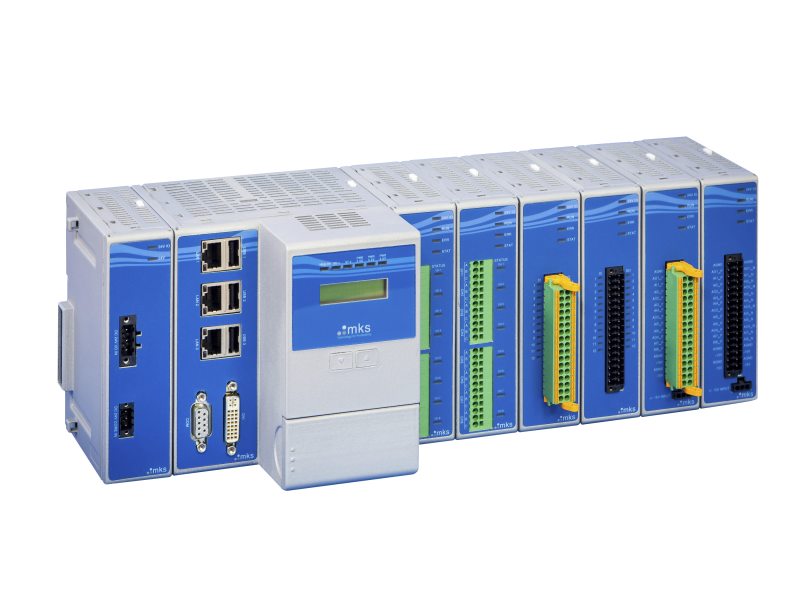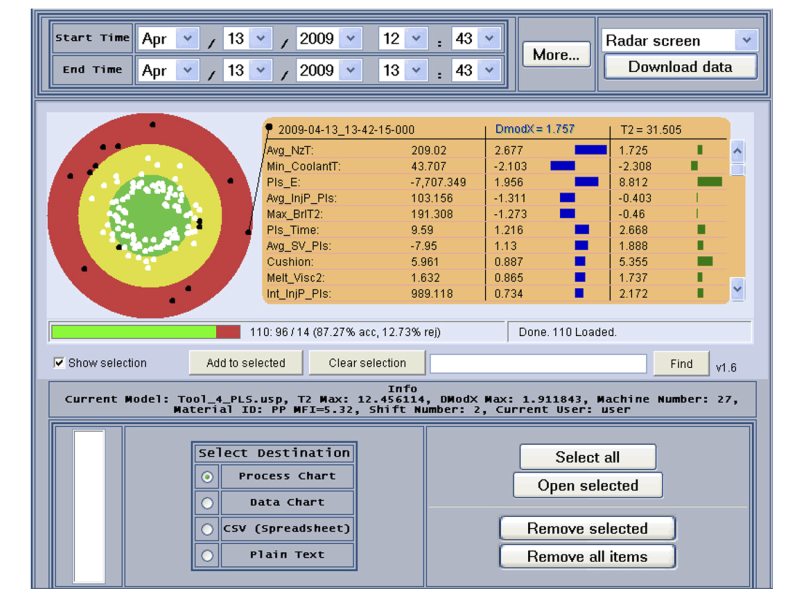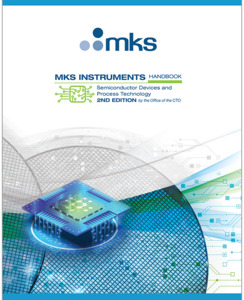Semiconductor Process Automation
The production of microelectronic integrated circuits is, arguably, one of the most complex manufacturing environments in the industrial world. Historically, unit operations such as the fabrication processes (clean, lithography, deposition, etch, etc.), metrology, material handling and others were performed manually. Over the course of decades, however, these unit operations have been converted to automated control owing, primarily, to the growing need to remove human beings from the fab environment. As the feature sizes shrank, device tolerance to particulate and other kinds of contamination became ever lower, until today there is essentially zero tolerance to contamination on wafers, masks and devices in progress. Process technology has evolved to the point where low to zero levels of contamination have become the norm within the process and equipment environments within different unit operations Today, the primary source of particles and other contaminants in the fab ambient is the human staff still needed within the cleanroom.
Over the years, much of the improvement in contamination control has come about through the increased use of automation within the fab. In older 6- and 8-inch fabs, individual process tools were typically automated and computer controlled but there was no automation and coordination of functions such as material handling, product/process characterization, and data collection and analysis between different unit operations; in contrast, modern 12-inch fabs have fully automated wafer processing, metrology, inspection, material handling, and device packaging with little or no human intervention between the introduction of bare substrates to the output of completed devices. Advanced device manufacturers require complex automation solutions for individual unit operations. Subsystems within a unit operation must be seamlessly integrated with intelligent, automated material handling; process control; data collection and analysis; and safety.
Figure 1. Functional levels of a distributed control system.
Automation takes the form of a hierarchical structure as shown in Figure 1, commonly referred to as a distributed control system. Each level of control is connected to the higher levels (and to other computers within the same level) by a high-speed communications network. In Level 0 (Field Level), microprocessor-based controllers execute control loops, perform logic functions and collect and analyze process and machine state data for specific applications within the global manufacturing process. Operational and product data collected at the Field Level are transferred to the unit supervisory systems in Level 2, Plant Supervisory, where they are used to adjust control loop parameters, analyze process health and track product quality. In Level 3, Production Control, process and product quality data for unit operations are passed to production control systems that coordinate the plantÕs overall operational activities (i.e. inventory, material handling between unit operations, product quality data, etc) and track historical operational and product characteristics. These latter data are passed along to Level 4, Production Scheduling, where the information is used to optimize asset utilization within the plant. The basic functions that are automated in a semiconductor fab can be considered as sequences or collections of the following activities:
- Lot selection (or dispatching), to determine which lot to process next
- Transport, to locate and move the lot
- Setting of process condition and recipe, to setup processing conditions
- Process start, to initiate processing
- Process data collection, to record and report measurement data during processing
- Go/no-go quality gating, to determine the acceptance of the processing results
- Exception handling, to handle and solve production exceptions
- Alarm handling, to handle and react predefined alarms
Typical parameters that must be considered in any semiconductor manufacturing automation scheme include:
- Message sequencing standards between different tools and the host computer
- Load/unload port design
- Materials handling
- Wafer cassette/pod identification
- Recipe ID and recipe body check
- Process control
- Engineering review and control
- Manual override
Automation within a fab can be categorized as lying within one of three areas:
- Tool automation, which deals with the automation of the different subsystems within a single unit operations such as a deposition or etch process;
- Cell automation, which deals with managing the connections between tools and tool stations, material movement within and between tools, and advanced process control;
- Global fab automation, which deals with system integration, the scheduling and processing of product lots, business management and fab maintenance.
It is well beyond the scope of this overview to provide an in-depth discussion of global fab automation. Instead, we will provide a brief description of the use of intelligent automation systems for control of the sub-processes in tool automation for a unit operation such as a thin film deposition (Level 1, Direct Control) and on data capture and analysis for real-time monitoring of faults within a manufacturing cell (Level 2, Plant Supervisory), both areas in which MKS has a strong product presence. This discussion will closely follow the available Application Notes and technical magazine publications that focus on these areas, available from the MKS Automation and Control Product Group.
Figure 2. A generic semiconductor wafer processing tool showing different subsystems required for operation..
To understand the issues associated with Level 1 intelligent automation for unit operations, consider the MKS generic semiconductor wafer processing chamber shown in Figure 2. This tool incorporates independent subsystems for, among other things, vacuum pressure control, gas flow control, process chamber and vacuum line temperature control, plasma power supply, automated wafer handling, process data collection, communication and analysis, and safety. A close examination of this single tool shows that it incorporates well over a dozen independent subsystems. Safe and effective control of units such as this, which contain networks with multiple semi-autonomous subsystems, can be extremely challenging. Care must be taken to avoid control problems due to latency (the delay between the issuance of a command by the control system and the machine response), synchronization, and operational timing challenges at both the local subsystem/device level and at the centralized chamber control level. Adding to the complexity of controlling the many subsystems in a single process chamber is the fact that contemporary semiconductor unit operations are almost invariably configured as cluster tools. Cluster tools incorporate a number of process chambers, usually performing different wafer fabrication processes with concomitant increases in complexity due to the presence of non-redundant systems on different chambers. Furthermore, wafer handling, occasional in situ metrology and the scheduling of internal wafer I/O and processing movements adds even more complexity to the control of these tools. The command information and sensor data needed for synchronized control of the many subsystems in the unit operation must be transferred between master and subsystem controllers in real-time or near real-time. In addition, real-time sensor data is needed by safety interlock systems, should a system failure occur. Finally, with the modular architecture of most advanced process tools, all of this control and communication must be duplicated for multiple process modules.
Process and equipment control in older, conventional semiconductor unit operations typically uses reactive paradigms in which the controller responds to detected changes in process variables with changes to the process control parameters that are intended to bring the process variables back within a specified range. The more advanced process/equipment control employed in modern 8- and 12-inch process tools uses intelligent control paradigms for proactive control of the multiple local nodes based on continually updated, predictive models of the equipment/process functions. Proactive control philosophies combine early fault detection and classification with improved process understanding, and integrated control and automation to achieve higher levels of efficiency and safety (and to lower the cost of a tool's operation). Such proactive control paradigms facilitate reductions in the environmental impact of a process, simplify the efforts needed to comply with government regulations, and help to reduce or eliminate the negative economic and branding costs associated with the release of faulty products to the marketplace.
Figure 3. A generic semiconductor wafer processing tool showing different subsystems and the application of MKS's Automation Platform for control of these subsystems.
Network/node-based control can be managed by using a single, centralized controller platform capable of both complete tool and process control. This approach reduces tool complexity through reductions in the number of microprocessor cores and Operating Systems (OS's), employed for control of the various tool functions. Centralized controllers for process tools can also significantly lower the cost of the control architecture as compared with existing approaches.
MKS's Automation Platform addresses the issues discussed above for Level 1 equipment/process control that enables localized and high speed I/O control for MKS and other manufacturers' control elements in a modular fashion. It integrates and automates the sensors and devices resident in a given process tool and communicates equipment and process state data to Level 2 controllers. Figure 3 shows an image of a generic semiconductor wafer processing tool and the different subsystems that can be controlled using the MKS Automation Platform.
In distributed control schemes, the operational and product data collected at Level 1 are transferred to the unit supervisory systems of Level 2. These data carry information that is useful in direct real-time monitoring and adjusting of the control and health of a process. The data can also be used for updating global empirical control and fault analysis models of overall plant operations. A change in the value of a single independent parameter within a production process has the potential to significantly impact the global process model, forcing an update to that model. Given the very large number of changing independent parameters in most production processes, the need for model updates can quickly become an overwhelming model maintenance issue. Manufacturers thus face a significant challenge in reducing the torrent of machine and sensor data to manageable metrics that summarize the process state and which can be used to maintain global process models. MKS has developed a solution for this problem in their SenseLink™ QM system which enables the collection, storage, retrieval, and analysis of system data, providing data monitoring, visualization, multivariate analysis, modeling and fault detection in a single system for process and product control.
MKS Automation Platform
The MKS Automation Platform is a modular, scalable and configurable automation and control solution (Figure 4). It integrates seamlessly with other MKS products, improving the utilization of existing tools. The platform consists of two programmable automation control options (PAC 100 & PAC 1000), Communication & Coupler Modules (CMs), a variety of I/O modules interfacing to any type of sensor, actuator, valve, etc.; the Controls Workbench software (CWB) for configuration, process monitoring, tuning, and data storage which supports a standard IEC 61131-3 programming interface. Its modular and open architecture make it scalable and flexible. It supports many fieldbuses and control networks.

Figure 4. Programmable Automation Platform.
SenseLink™ QM Real-Time Quality Monitor
SenseLink™ QM provides process monitoring and part quality prediction through the application of multivariate analysis (MVA) technology from MKS Analytical & Control Solutions (Figure 5). All necessary data acquisition, multivariate processing, and control functions come from one self-contained, compact unit based on the MKS PAC. Adding a SenseLink™ QM monitor to a semiconductor process tool provides in-process fault detection along with contribution details which provide an understanding of your process, not attainable from traditional Supervisory Control and Data Acquisition (SCADA) and Statistical Process Control (SPC) approaches.

Figure 5. SenseLink™ User Interface.
Related Topics
Front-end Semiconductor
For additional insights into semiconductor topics like this, download our free MKS Instruments Handbook: Semiconductor Devices & Process Technology
Request a Handbook
 Ultra-High Velocity
Ultra-High Velocity